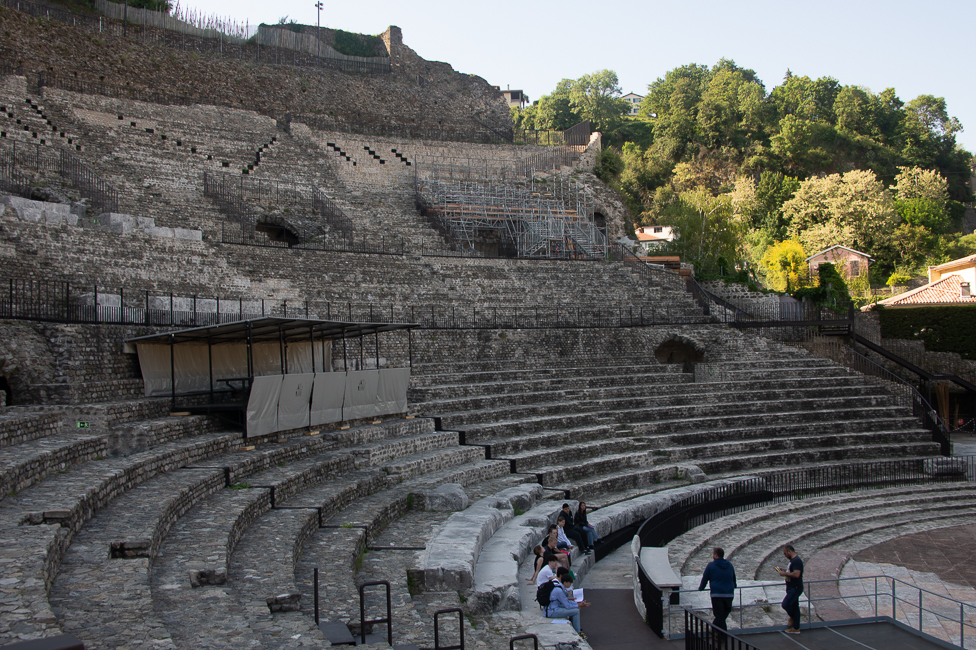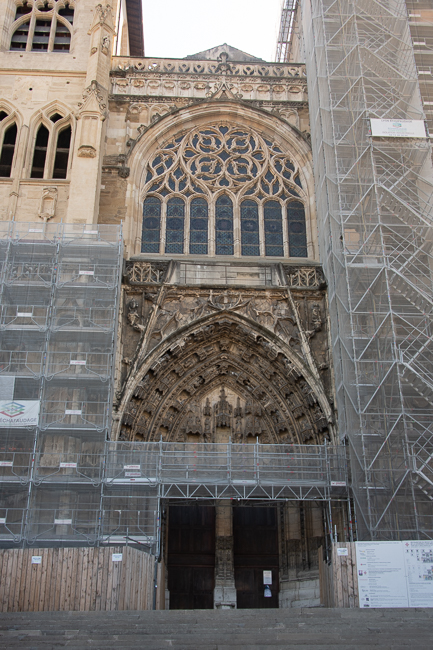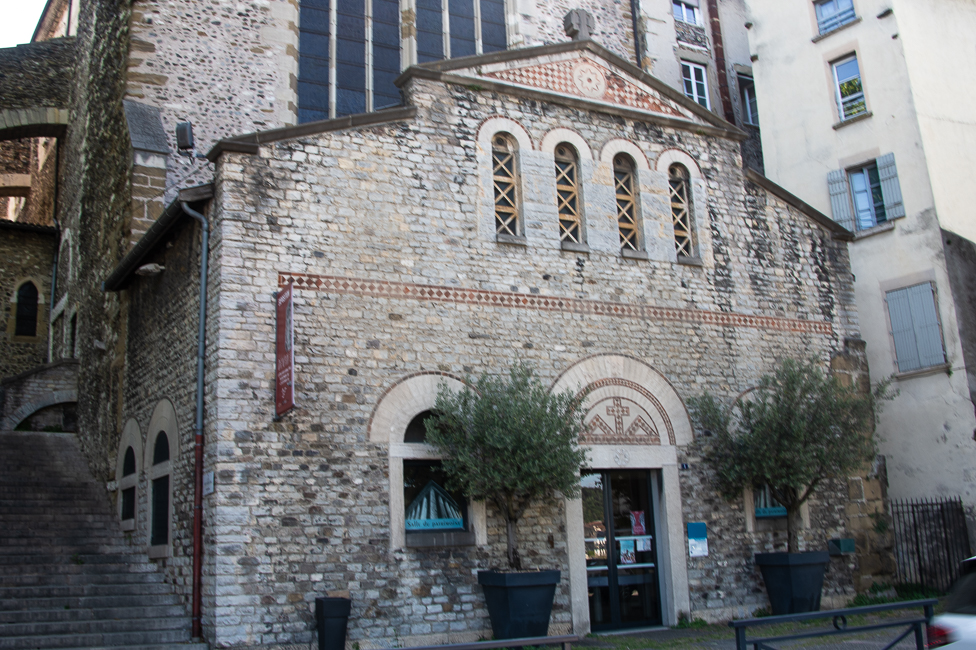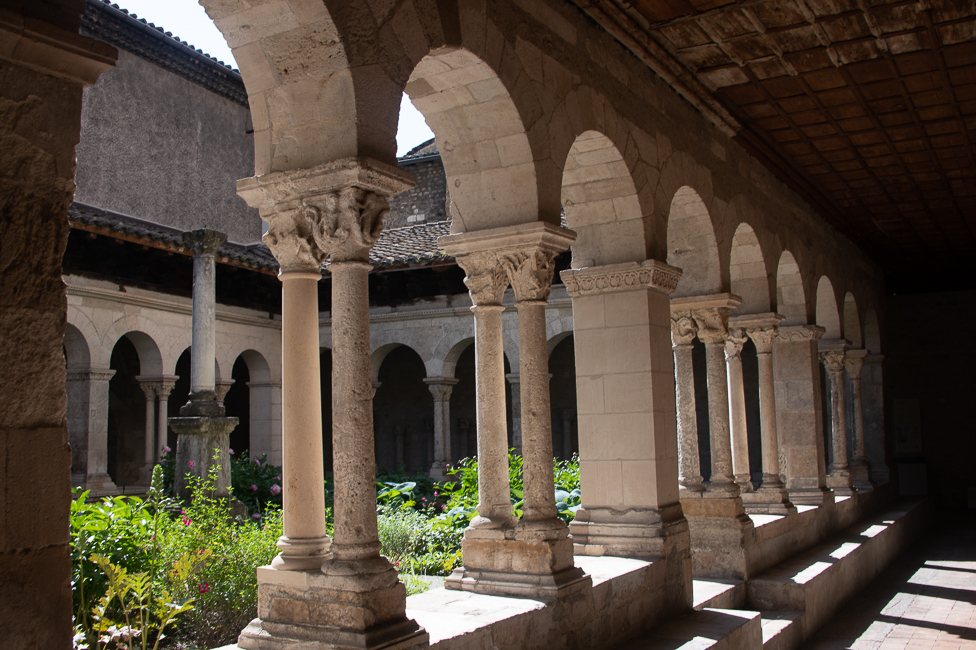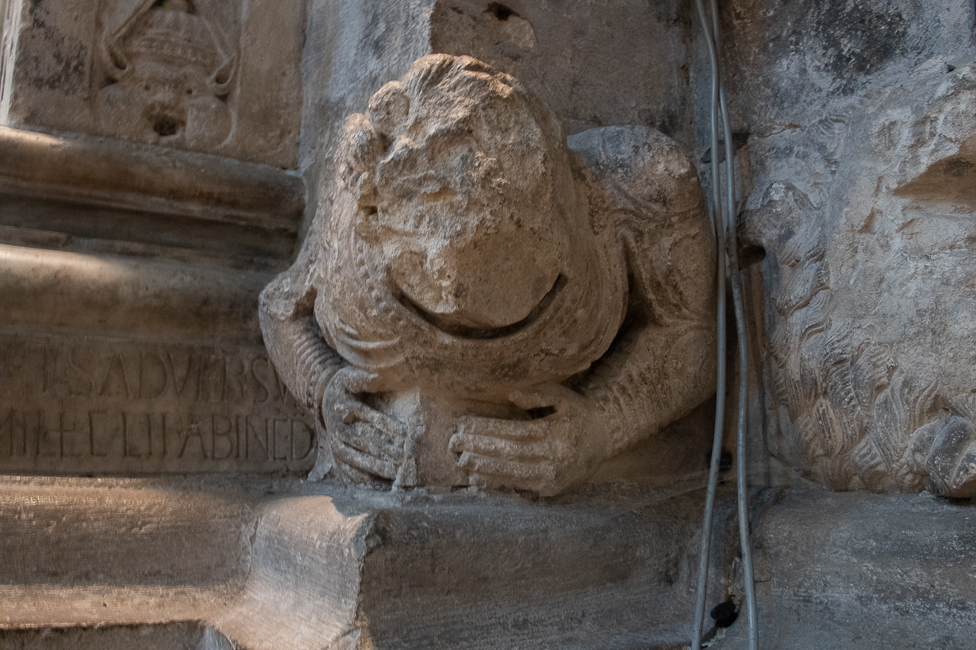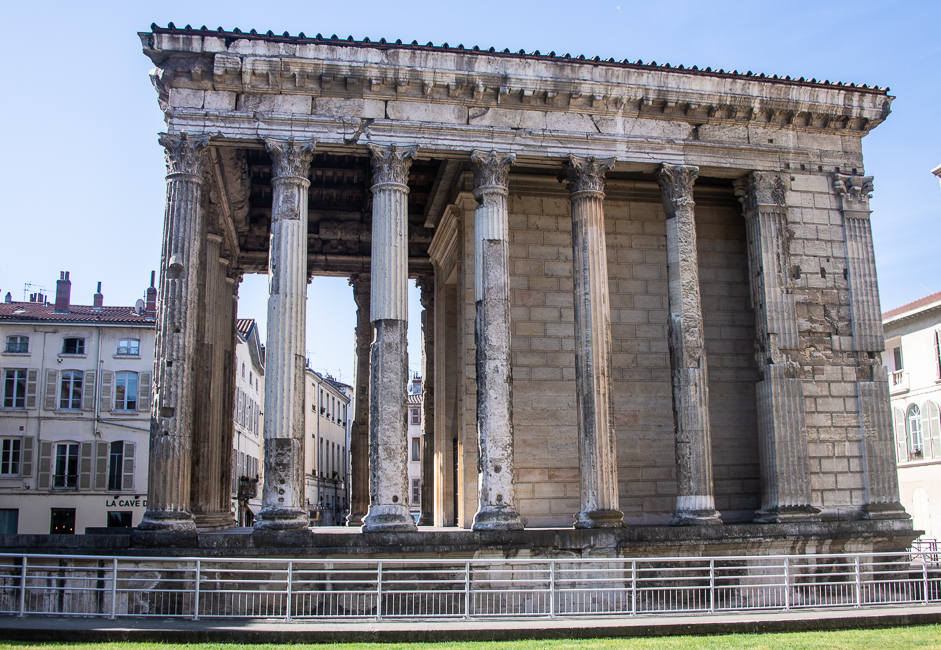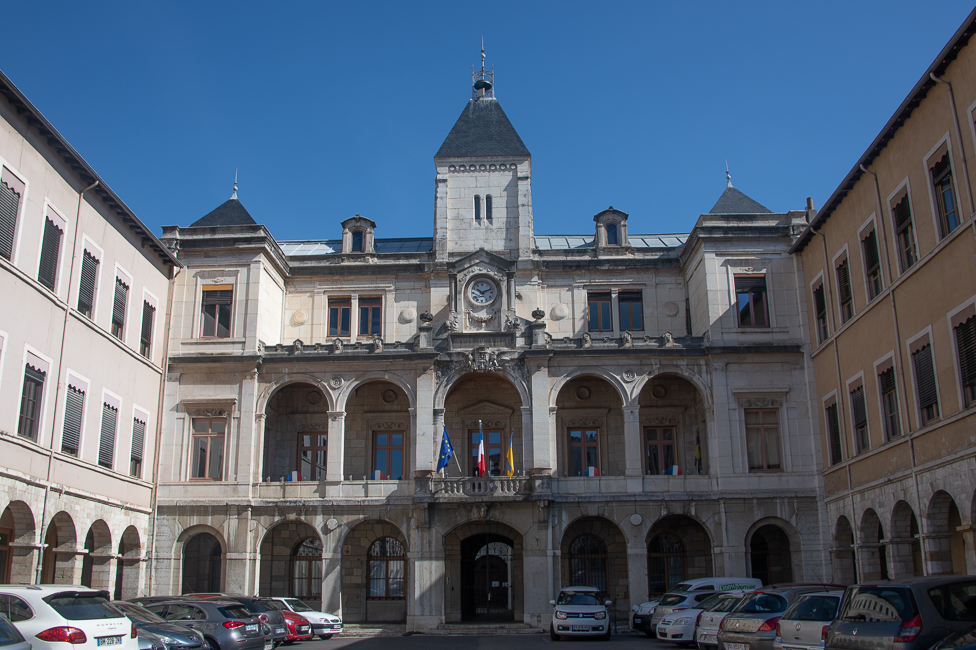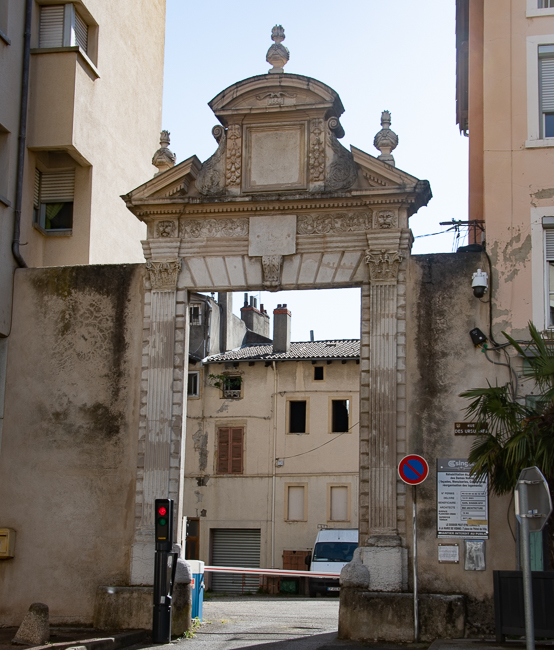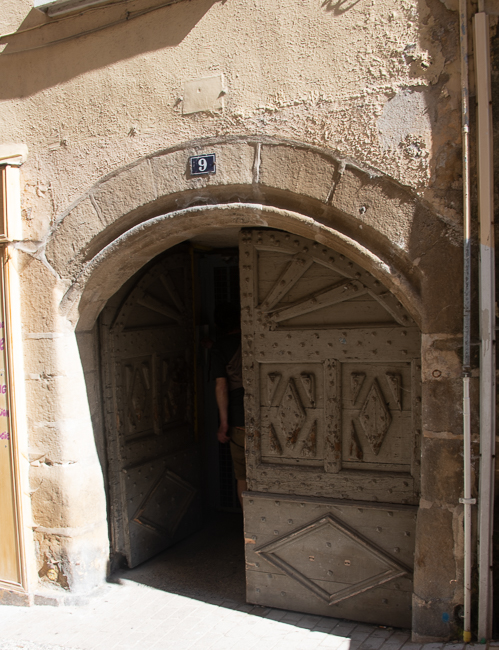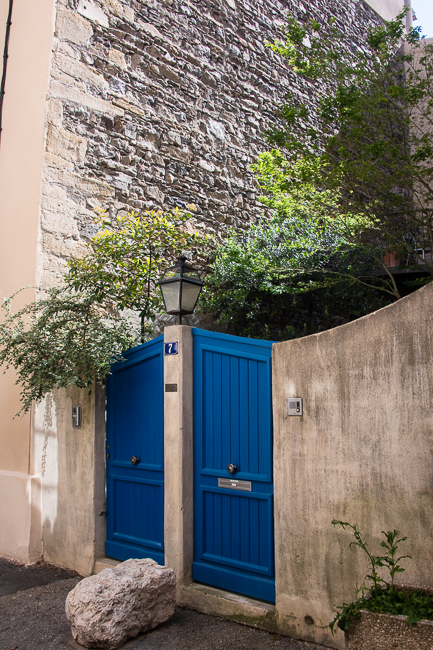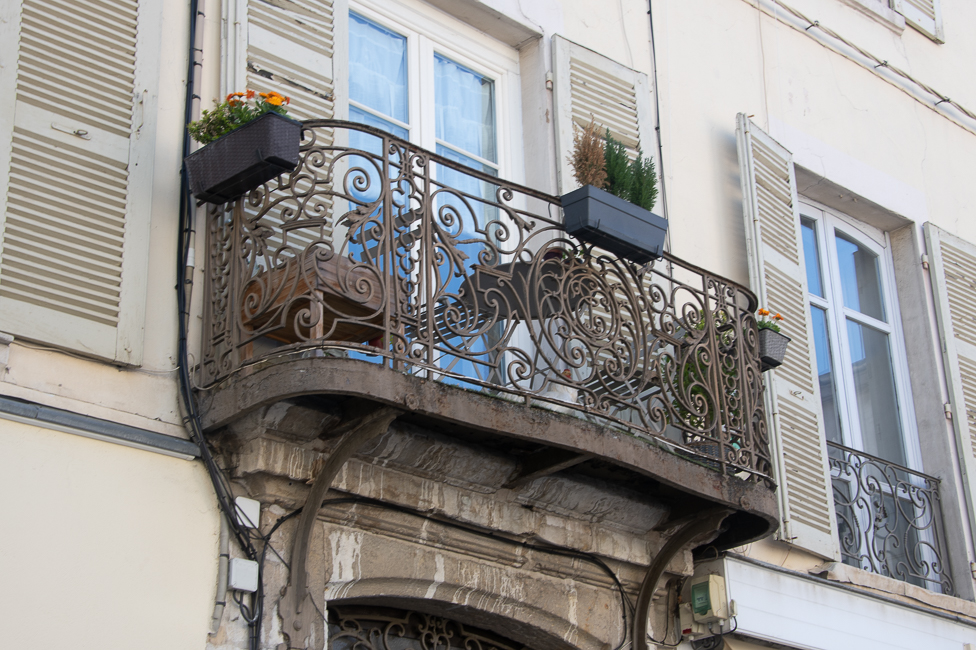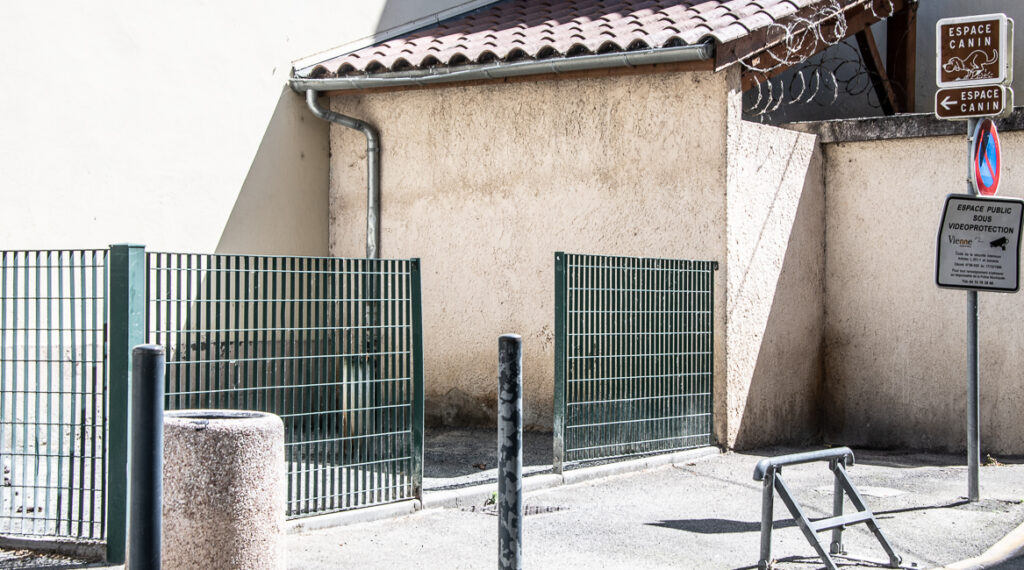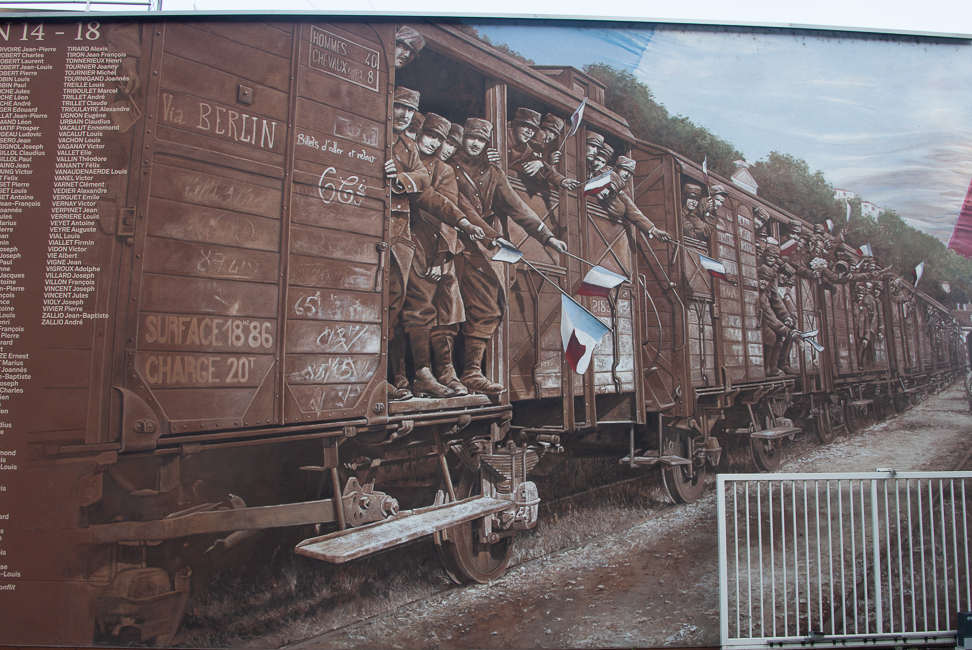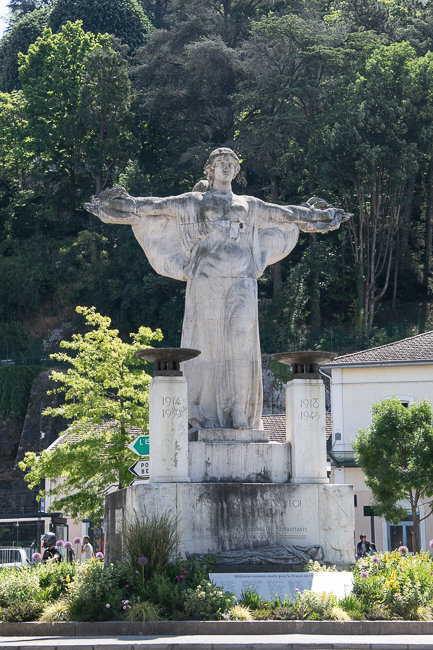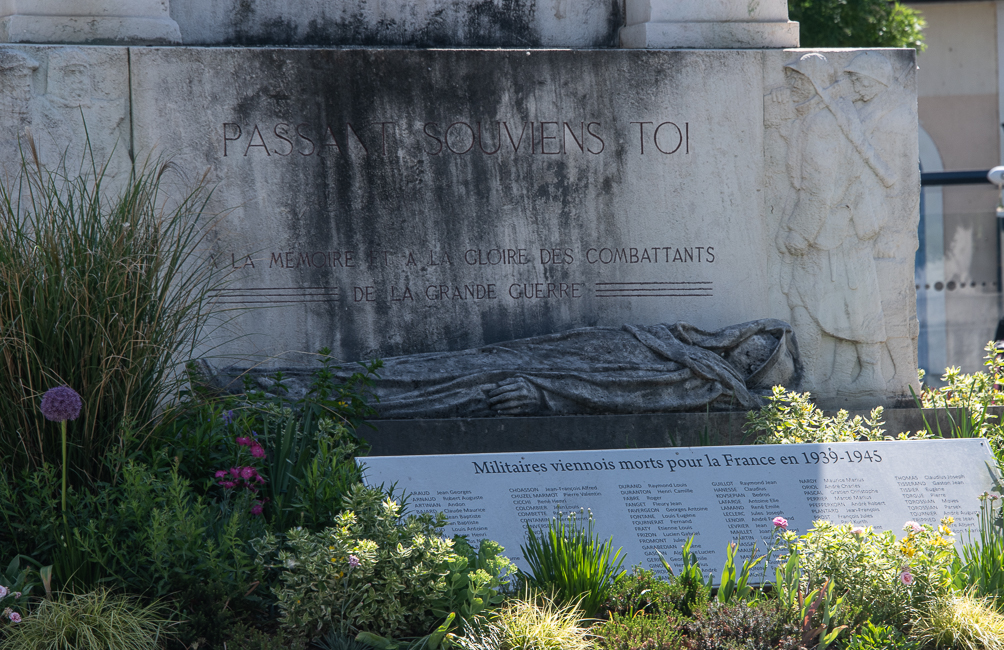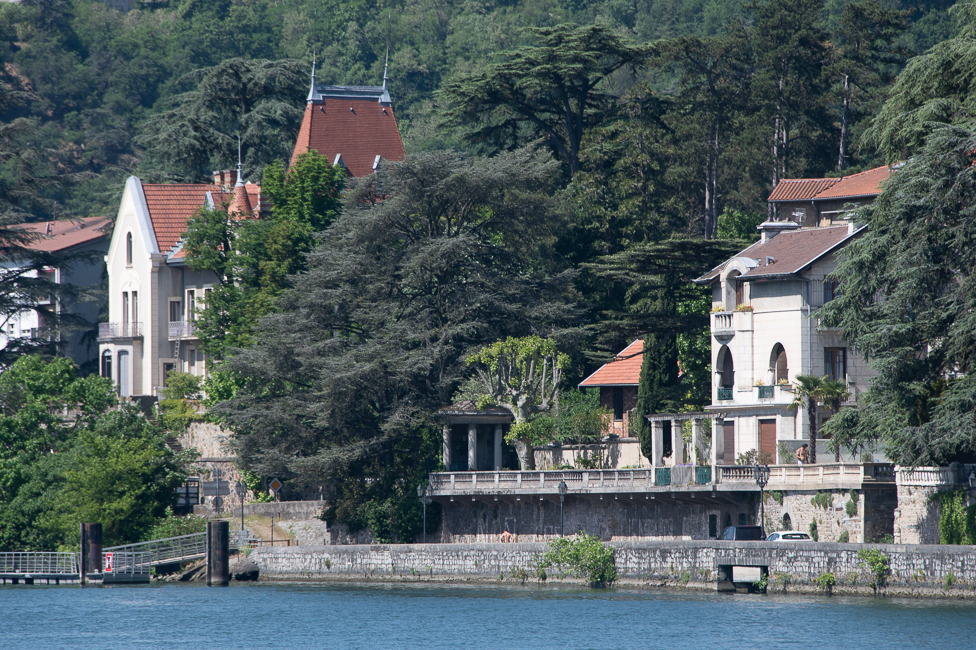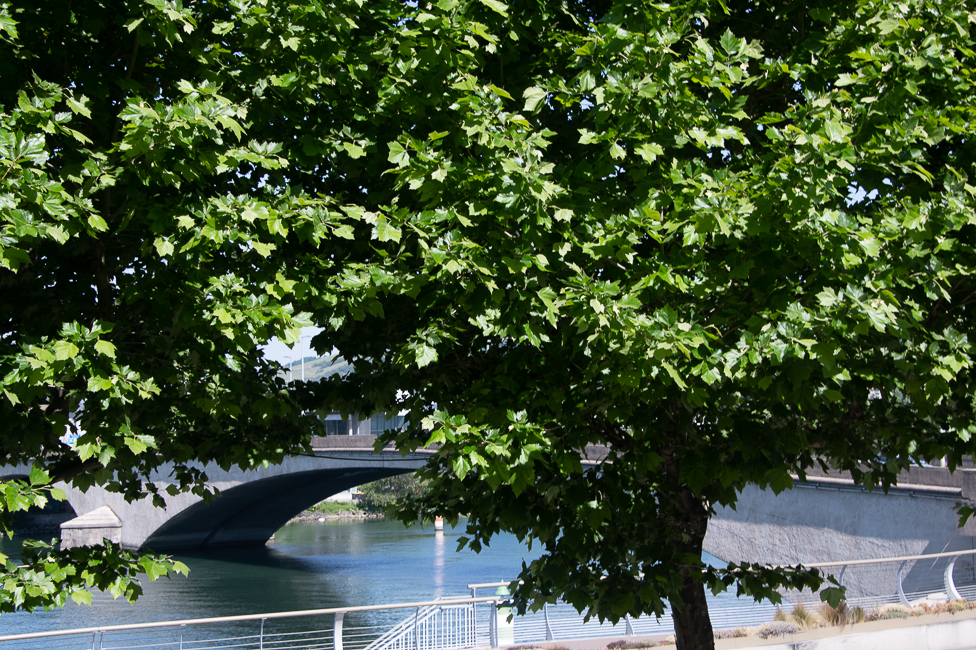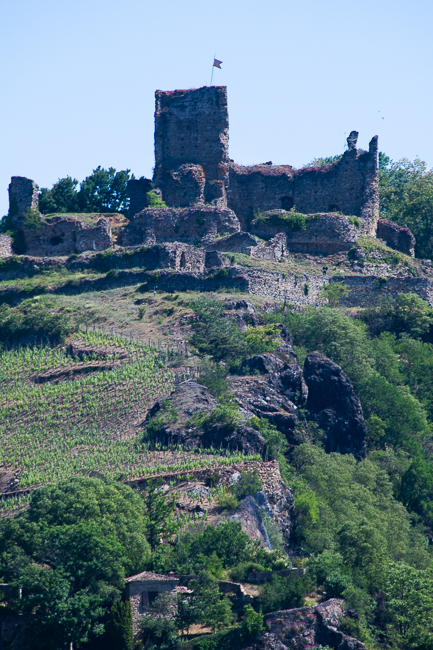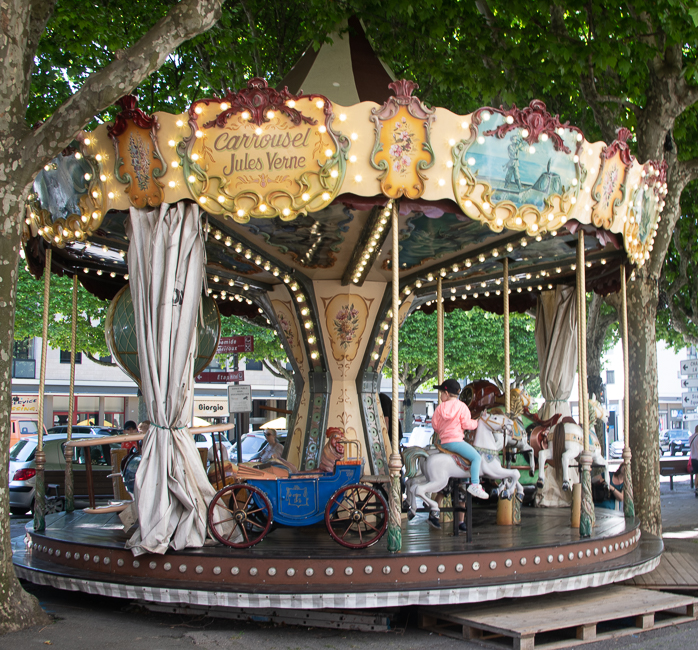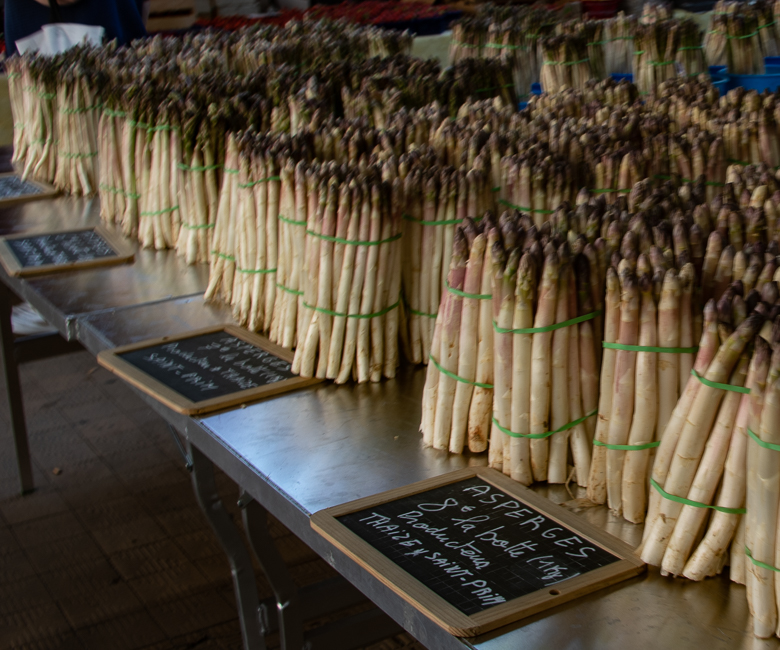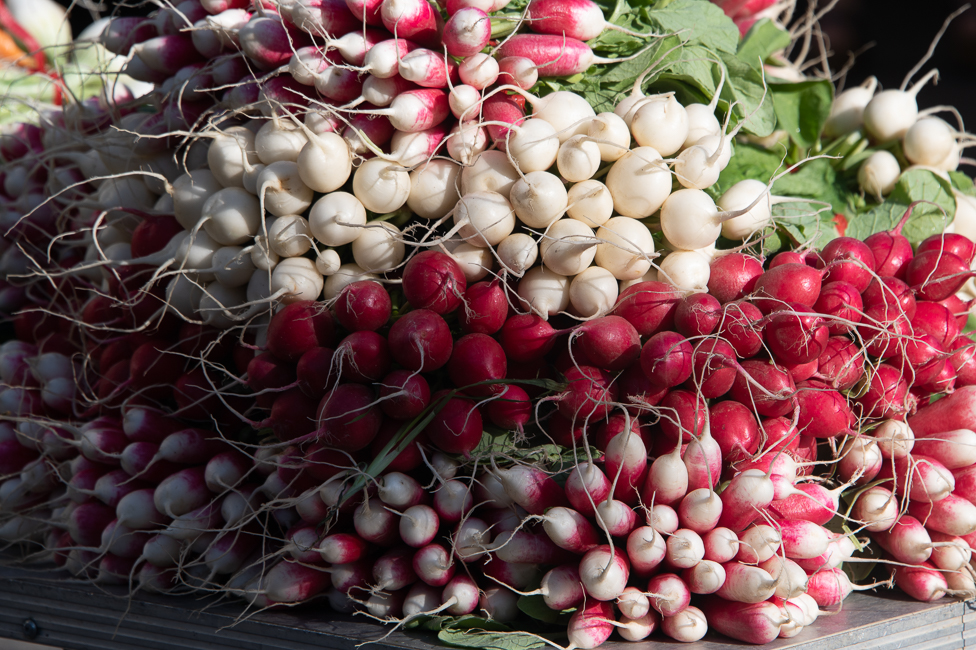May 2022
Vienne is a mere 18 minutes by train from Lyon and yet it is a million miles away.
Vienne sits on the Rhône River where it eventually joins the Gère River, about 20 miles south of Lyon. In ancient times Vienne was the capital of the Celtic tribe known as the Allobroges. It was conquered by the Romans in 121 BCE and became one of the most important towns of Gaul until Roman rule of the area ended in 275 CE. Late in the 9th century the town became part of the Holy Roman Empire, and it was transferred to French sovereignty in 1450.
The Roman Theater was built in the 1st century CE and was one of the largest in the Roman world. It could hold 11,000 spectators who could watch chariot races or singing and poetry performances. In the 4th century, due to disapproval by the church, the emperors banned theater productions and so the theater was abandoned. It became a quarry and dump in the 3rd century and was eventually buried underground. Work began on its restoration in 1922 and today it is home to theater and Vienne’s Jazz Festival.
Originally a roman temple dating from the early 1st century CE. Saint-Maurice Cathedral became a Christian church in the 5th century. It was used as a club for the Jacobins during the French Revolution (1787–1799).
The abbey of Saint-Andre-le-Bas was founded in the 8th century by Duke Ansemund. The church was originally a chapel of the palace of kings of Burgundy built in the end of the 9th century and flourished in the High Middle Ages.
The Hundred Years’ War and the competition of new religious orders reduced the power of the convent and it never recovered from the Wars of religion. The monastery was dissolved in the late 18th century.
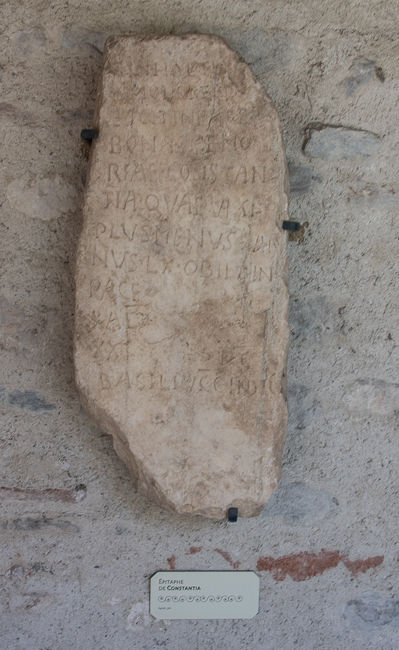
The abbey relied on income from the privilege of being buried there. This is an obituary plaque dating to the 6th century.
The Temple of Augustus and Livia was built sometime between 20 and 10 BCE, although some features of the Temple date to the 1st century CE. The temple’s excellent state of preservation is largely the result of it being incorporated into a church as early as the 5th century and later restored in the 19th century. The temple is dedicated to the imperial cult honoring Emperor Augustus and his third wife, Livia.
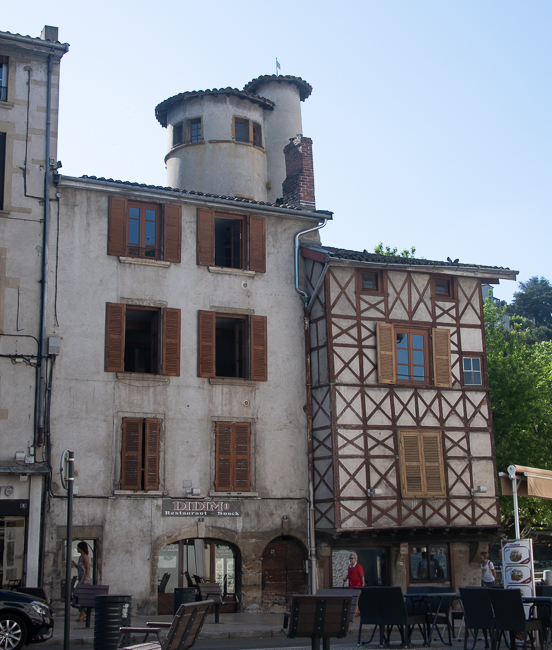
At the end of the Middle Ages, this house sat next door to the pillory where criminals who were condemned by the Justice of the county were exposed and tormented. The building is attributed to the end of the 15th century with its timber frame facade. There is a spiral staircase leading to the room at the top of the tower.
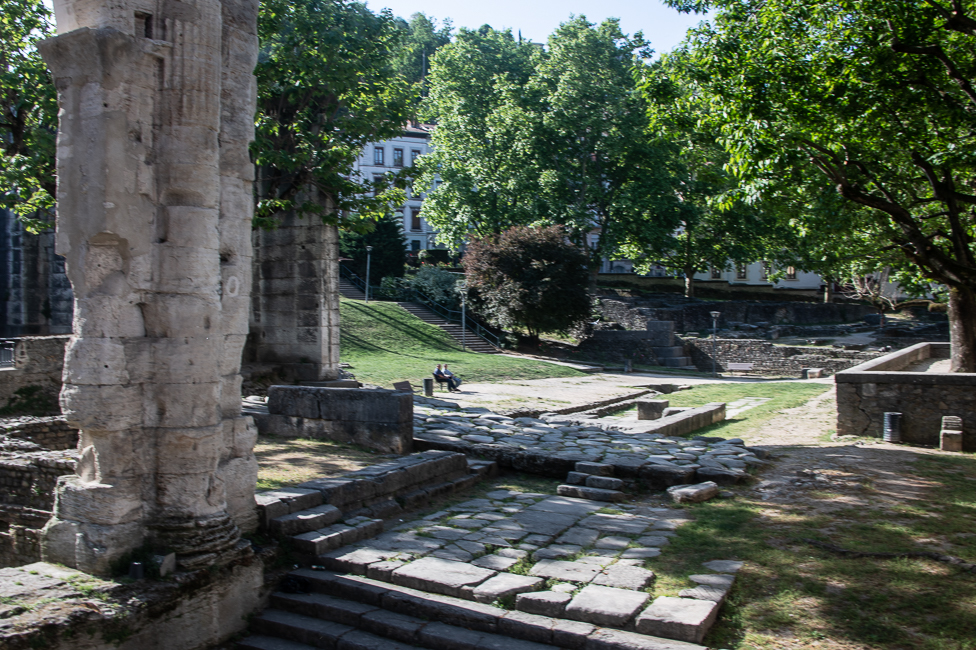
The archeological garden of Cybele. It is thought that these walls were likely former homes of Roman forum council members.
French in style, the Hôtel de Ville is in the heart of the city. It was the private home of Marquis de Rachais until 1768 when the property was acquired by the city.
Interesting Architectural Sightings
Dogs and their accoutrements of Vienne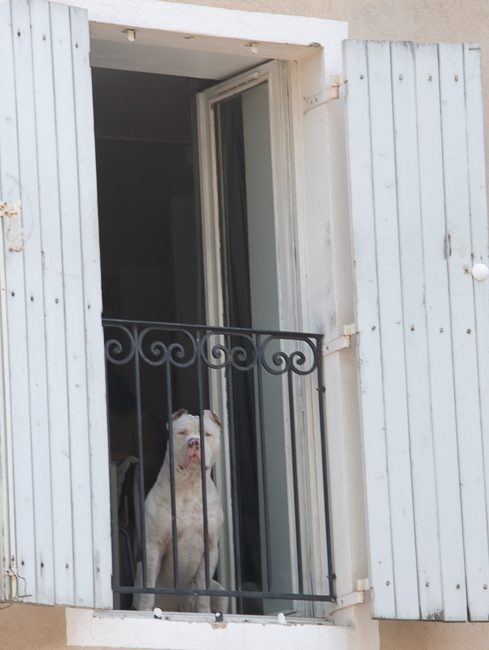 *
*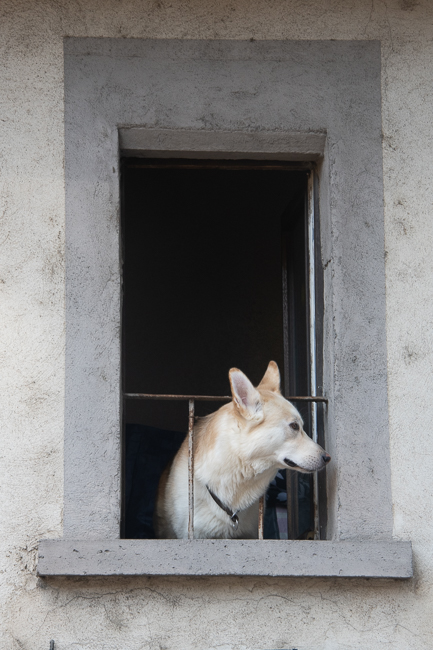 *
*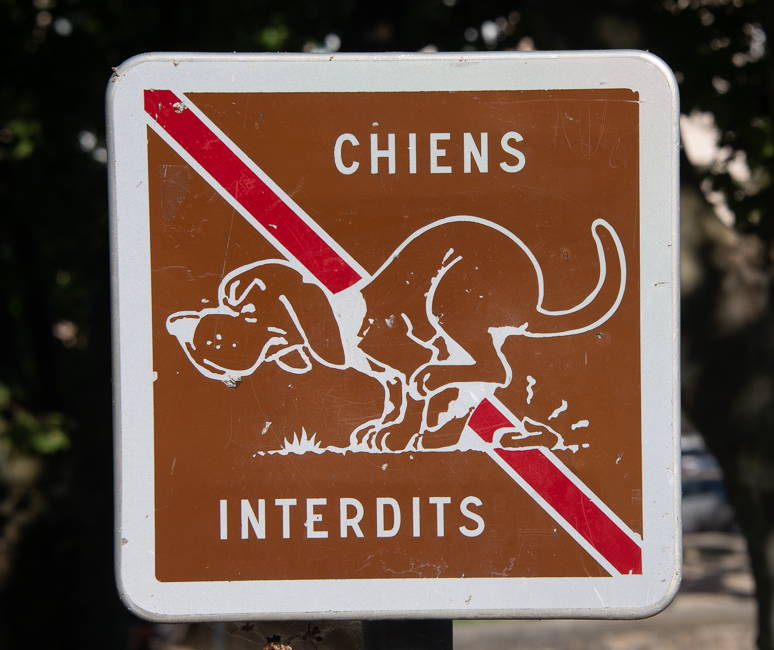 *
*
World Wars and Vienne
France entered World War I when Germany declared war on August 3rd 1914.
The piece at her feet, while difficult to see is rather poignant.
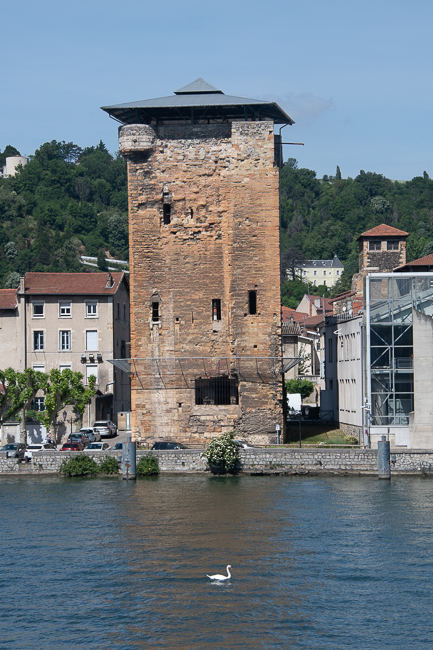
During Antiquity, the village of Saint-Romain-en-Gal was a residential and commercial district this is some of the archeological site that remains.
Saturday morning Vienne hosts the second largest market in France.
Vienne is a nice train ride from Lyon, it makes for a lovely one day excursion, especially if you time it with market day. I went for the Roman ruins and was not disappointed.
